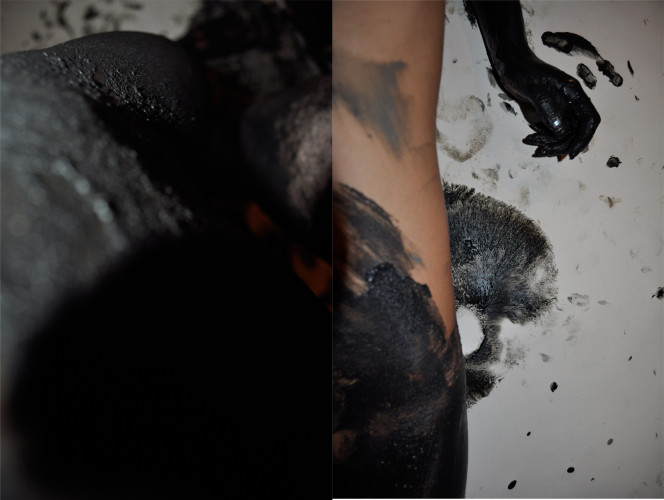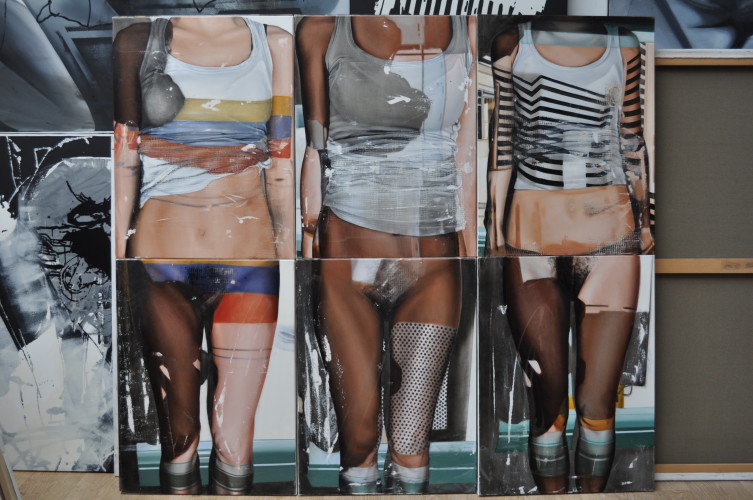The city of Constanța remains a back-up space for contemporary art. Despite the efforts of some ephemeral groups such as „Constanța Caz” or the old „ASALT” and „Celulă de creație libelulică” (Firefly creation cell), the Constanța of the last decades felt the absence of an alternative in the institutional circuit that preserved and monopolized the mental inertia of a past era (according to Erwin Kessler’s “chart”, we are still at the UAP stage), while general cultural policies went under.
Still, there is a possibility that things could be changing from the inside. An excellent museum for Romanian modern art (with a predominantly impressionist collection), The Constanța Museum of Art, deserves recognition for assigning several temporary exhibition rooms for artists that are still alive, but I still think that more should be done. The curatorial projects are not the best and there are definitely some things lacking when it comes to promoting.
In the meantime, MAC’s most significant shows are due to the partnerships with institutions from Romania and abroad. The most surprising event was organized with the recently announced Museum of Recent Art in Bucharest – Ecaterina Varna with “Coasa era pui” (the artists’s first solo show in her native town). After the show “Mask 2015”, professor Florin Stoiciu from UNARTE Bucharest is once more present in Constanța via a group show by the mural students (that graduated in 2015) and another show, this time a personal show for another UNARTE professor – Petru Lucaci, the president of the Artists Union. So “Dressing the body” is a turning point (at least from the point view of its prestige) for MAC. “Dressing the body” brings together four bodies of work: “Black Cocktail” (2013, mixed media on canvas; there are a lot of works that were recovered from the “Clarobscur” series, “Stripped” (2014, oil on canvas), “Layers” (2015, oil on canvas) and, in the last room, “Black therapy” (2011, digital print on canvas). From charcoal as a medium to mud as a subject, the resources of the color black – Petru Lucaci’s central preoccupation for the last two decades – have been exploited to the maximum. The return to color that one can notice in the last two bodies of work – “Layers” and “Striped” – is dictated by the necessity of the new dominant theme – the body. The ambivalence of Petru Lucaci’s works – mixed preoccupation for aesthetics and concepts – finds its “Gordian knot”.
For a series of works that aims to probe the policies of the body in contemporary times, “Dressing the body” does not appear to be critical – the “dressing” (here, it becomes a ritual) is an action committed by an unknown agent to the “body”. What body? Not an androgynous one, but (as it is evident in most of the works) a feminine one – something that the artist never intended, according to his statements. So how can the painter’s efforts criticize the violence that comes with any intervention that marks this body?
All the paintings lack facial traits, precisely the part that can still grant a body’s individuality (despite plastic surgery and facial statistics). With the exception of the movements in the photographs that make up “Black therapy” (in an action that reminds one of Yves Klein), the female body is presented in passive postures (as opposed to the passive movement by the only body that appears to be masculine) that are later conjugated in “Stripped” with a casual attire… revealing its oppressive potential. Could this be over-interpretation? The projection quality of the marks in “Layers”, that can be used at the same time with the support-body or the support-clothing, affecting the canvas’ surface, could certify another interpretation: mannerisms, signs of a pictorial self-referentiality.
Making use of this impulse and the pretense of a conceptual investigation, Petru Lucaci compels us to reevaluate the abstract through this rectification theatre. Subjecting a body that is already reduced to an object to this plastic post-processing, the master (a word that refers to the ceremonial or to a hierarchy) demonstrates his capacity to (re)model (the show’s catalog has an interesting feel of making-of)… while trying to “uncover”/”unravel” this body of meanings. The success of these efforts to overtake the usual associations is limited precisely due to the visual impact of the works: the view is violent and it makes juxtapositions until the material is overtaken.
Petru Lucaci is one of the most versatile painters of the 80s generation but, at least in this case, his effort to raise to the conceptual level seems to have a limit (a vulnerability to feminist interpretations, for instance). His merits are those of a painter who, at the peak of his career, juggles with both ends of the stylistic specter in contemporary painting – (photo)realism and abstract impressionism – with no compromise. In any case, the chance to see painting that is actually contemporary is rare for the Constanța audience.
Dressing the body can be seen at The Museum of Art in Constanța between August 21 – September 17, 2015.
POSTED BY
Yigru Zeltil
Yigru Zeltil (pen name of Florin Ionescu) was born in 1992 in Constanța. He graduated from the Literature department of the Ovidiu University in Constanța. He is the author of several literary magaz...
yigruzeltil.blogspot.ro



















Comments are closed here.